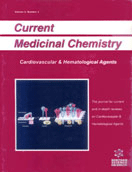Abstract
For many years, platelet aggregation, which is mediated exclusively by the binding of fibrinogen to activated glycoprotein (GP) IIb / IIIa, has been used for the screening of antiplatelet agents. However, clinical experience with anti-GP IIb / IIIa agents, which can completely inhibit platelet aggregation, has shown that these drugs are not the most ideal agents for the prevention of atherothrombosis. Recently, many investigators have reported that platelets play a major role in thrombus formation at sites exposed to blood flow, and also that there is a crucial difference between the mechanism of platelet thrombus formation under blood flow conditions in vivo and that of platelet aggregation occurring in conventional aggregometry. Indeed, multiple receptor-ligand interactions, including von Willebrand factor (VWF) binding with platelet GP Iba and GP IIb / IIIa, collagen binding with collagen receptors, as well as stimulation of platelet receptors, such as adenosine 5-diphosphate (ADP) receptors, appear to be involved in the process of in vivo arterial thrombus formation. Moreover, not only platelets, but also the coagulation cascade activated by the procoagulant activity expressed on the surface of activated platelets, are believed to play a crucial role in the formation of occlusive thrombi. These findings suggest that drugs which block events upstream of the final common pathway for platelet aggregation might be better antiplatelet agents than those that merely inhibit platelet aggregation. We may then expect new antiplatelet agents on the horizon that exert their actions against both thrombus formation under blood flow conditions and against the procoagulant activity appearing on the surface of activated platelets.
Keywords: von willebrand factor, platelet, arterial thrombosis, shear stress, endothelial cell
 4
4













